Pietro or Pier Giovanni Aliotti or Aleotti (died 1563) was an Italian bishop.
Pietro or Pier Giovanni Aliotti or Aleotti (died 1563) was an Italian bishop.
In 1532 he became Guardarobiere Pontificio and Maestro di Camera, initially for pope Clement VII and then for pope Julius III, before being made bishop of Forlì in 1551, a post he held until his death. He was a confidant of several popes and given several other positions by them. He also took part in the final documents produced by the Council of Trent and was one of the dedicatees of Bernardo Cappello's Rime.
Vasari reports that Michelangelo disliked him and nicknamed him 'Tantecose', since "he wanted to be involved in everything ... and everything depended on him". Benvenuto Cellini also complained about him in his autobiography since he often urged him (on behalf of pope Clement VII) to complete unfinished commissions.
He was very active as bishop, causing Forlì to be "quoted as an example of orthodoxy and of religious zeal". [1] His successor Antonio Giannotti (1563-1578) continued along the same lines and so in the 1560s the pathos in the Forli School of art "anticipated that of the Roman school in the 1570s". [2]

Pope Clement VII was head of the Catholic Church and ruler of the Papal States from 19 November 1523 to his death, on 25 September 1534. Deemed "the most unfortunate of the popes", Clement VII's reign was marked by a rapid succession of political, military, and religious struggles—many long in the making—which had far-reaching consequences for Christianity and world politics.

Pope Gregory VII, born Hildebrand of Sovana, was head of the Catholic Church and ruler of the Papal States from 22 April 1073 to his death in 1085. He is venerated as a saint in the Catholic Church.
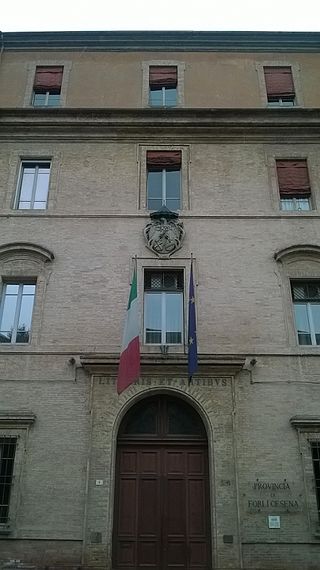
The Province of Forlì-Cesena is a province in the Emilia-Romagna region of Italy. Its capital is the city of Forlì. The province has a population of 394,273 as of 2016 over an area of 2,378.4 square kilometres (918.3 sq mi). It contains 30 comuni and the provincial president is Davide Drei. Although located close to the independent Republic of San Marino, Forlì-Cesena does not share a land border with the sovereign state.

The Archdiocese of Ancona–Osimo is a Latin Church ecclesiastical territory and metropolitan see of the Catholic Church in the Marche region of Italy.
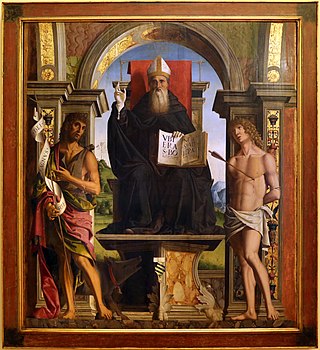
The Forlivese school of art was a group of Italian Renaissance painters and other artists. Most were born in Forlì or near it in the Emilia-Romagna region of Italy. Some other artists went to Forlì to study.

The Diocese of Verona is a Latin diocese of the Catholic Church in northern Italy. The diocese belongs to the Ecclesiastical Province of Venice. The bishop of Verona has his seat in Verona, Veneto. The episcopal throne is in the cathedral, which had originally been dedicated to S. Maria Matricolare and S. George.
The diocese of Bagnoregio is a former Roman Catholic territory, located in the modern Province of Viterbo in the Italian region of Lazio, located about 90 kilometres (56 mi) northwest of Rome. Prior to the creation of the Kingdom of Italy, it belonged to the Papal States, and was located in the region of Umbria. It had been given to the Papal States by the Emperor Louis I in 822. In terms of religious administration, it was directly dependent upon the Holy See (Papacy). The pope appointed an Apostolic Administrator for the diocese of Bagnoregio on 8 June 1970, and the bishop was not replaced when he died in 1971. The diocese was suppressed on 30 September 1986 by Pope John Paul II.

Cristoforo Numai was an Italian Franciscan, who became minister general of the Friars Minor and a cardinal.

Pietro Pileo di Prata (c.1330–1400) was an Italian bishop and cardinal. He was a significant diplomat and go-between in the affairs of his times, and was nicknamed the "cardinal with three hats", which he obtained successively from Urban VI, Clement VII, and Boniface IX.
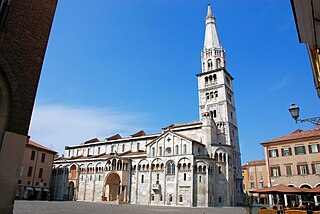
The Archdiocese of Modena–Nonantola is a Latin archdiocese of the Catholic Church in Italy. It existed as the Diocese of Modena in central Italy from the 4th century. Originally it was a suffragan the diocese of Milan, but later became a suffragan of Ravenna. Because of the schism of the Antipope Clement III, Pope Paschal II released Modena from obedience to the church of Ravenna, but Pope Gelasius II restored the previous status. Modena continued as a suffragan of Ravenna until 1582, when the Archdiocese of Bologna was created by Pope Sixtus V in the Bull Universi orbis of 1 December 1582, and was assigned Modena as one of its suffragans.
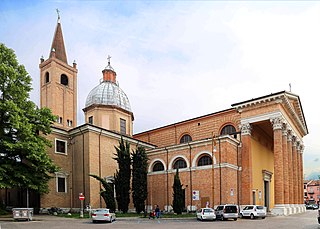
The Diocese of Forlì-Bertinoro is a Latin diocese of the Catholic Church in Romagna, Italy. Until 1986 it was known as the Diocese of Forlì, in existence perhaps from the fourth century. In that year the Diocese of Bertinoro was united to it. The diocese is suffragan to the Archdiocese of Ravenna-Cervia.

The Diocese of Tivoli is a Latin Church ecclesiastical territory or diocese of the Catholic Church in Latium, Italy, which has existed since the 2nd century. In 2002 territory was added to it from the Territorial Abbey of Subiaco. The diocese is immediately exempt to the Holy See.

The Archdiocese of Chieti-Vasto is a Latin Church diocese of the Catholic Church which received that name in 1986, when the two separate dioceses, which had been governed by one and the same bishop, were united in one diocese. The diocese of Chieti had become the Archdiocese of Chieti in 1526, when promoted by Pope Clement VII. Chieti is about 8 miles (14 km) south-west of the Adriatic port city of Pescara.
The Catholic diocese of Sarsina was a Roman Catholic ecclesiastical territory in Emilia-Romagna, northern Italy, seated in Sarsina, in the province of Forlì, some 32 km south-southwest of Cesena. The diocese was founded in the 5th century, and was suffragan (subordinate) to the archbishop of Ravenna. The diocese existed until 1986, when it was united with the diocese of Cesena.
The Italian Catholic diocese of Bertinoro existed from 1360 to 1986. In that year it was merged with the diocese of Forlì to create the diocese of Forlì-Bertinoro.

The Diocese of Ventimiglia-Sanremo is a Latin diocese of the Catholic Church in Liguria, northern Italy. The name of the historic Diocese of Ventimiglia was changed in 1975. It was originally a suffragan diocese of the Metropolitanate of Milan up to 1806, when it was transferred to the Metropolitanate of Aix; but it has been a suffragan of the Archdiocese of Genoa since 1818.

The former Italian Catholic Diocese of Chiusi-Pienza, in Tuscany, existed until 1986. In that year it was united into the Diocese of Montepulciano-Chiusi-Pienza. The Diocese of Chiusi (Clusinus) was at first immediately subject to the Holy See, but was made a suffragan of archdiocese of Siena by Pope Pius II. From 1459 to 1986, it was a suffragan of the archdiocese of Siena.
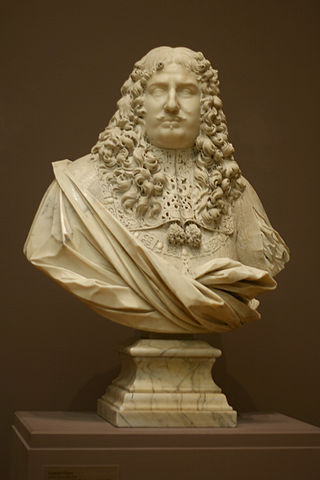
Lorenzo Ottoni, also known as Lorenzo Ottone or Lorenzone, (1658–1736) was an Italian sculptor who was commissioned by the papacy and various noble houses of Renaissance Italy.
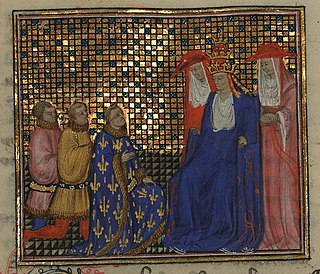
Robert of Geneva was elected to the papacy as Clement VII by the cardinals who opposed Pope Urban VI and was the first antipope residing in Avignon, France. His election led to the Western Schism.
The Diocese of Comacchio was a Roman Catholic diocese located in the coastal town of Comacchio in the province of Ferrara and region of Emilia Romagna, Italy. In 1986, the diocese of Commachio was united with the diocese of Ferrara to form the Roman Catholic Archdiocese of Ferrara-Comacchio, and lost its individual identity.